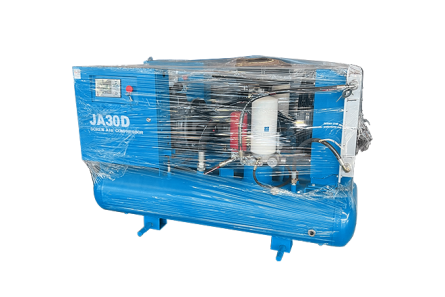Water Well Drilling Rigs: Types, Techniques, and Modern Innovations
Apr 14, 2025
Accessing groundwater requires precision, power, and adaptability, and water well drilling rigs are engineered to meet these demands. While the previous guide focused on core mechanics, this article dives deeper into the “variety of drilling rigs”, “emerging technologies”, and “practical applications” that define modern well-drilling practices. Whether you’re a landowner, engineer, or environmental planner, understanding these nuances ensures efficient water sourcing.
1. Types of Water Well Drilling Rigs
Not all rigs are created equal. The choice depends on depth, terrain, and geological complexity:
A. Cable Tool Rigs (Percussion Rigs)
How They Work: A heavy chisel-shaped bit is repeatedly lifted and dropped to fracture rock.
Pros: Simple design, low cost, effective in hard rock.
Cons: Slow (1–5 meters/day), limited to shallow wells (<150 meters).
Best For: Rural areas with limited resources or small-scale projects.
B. Rotary Rigs
How They Work: A rotating drill bit cuts through layers, aided by fluid or air to remove debris.
Direct Rotary: Uses drilling mud for stabilization (ideal for soft soils).
Reverse Rotary: Suctions cuttings via the drill pipe (faster in loose sediments).
Pros: Versatile, handles depths up to 300+ meters.
Cons: Higher operational costs, requires skilled operators.
Best For: Medium-depth wells in mixed geology.
C. Hydraulic Rigs (DTH and Top Hammer)
Down-the-Hole (DTH): Combines rotation with pneumatic hammering for hard rock.
Top Hammer: The hammer operates above ground, transferring energy via the drill pipe.
Pros: High speed (10–40 meters/day), efficient in granite or basalt.
Cons: Air compressor dependency, noisy.
Best For: Industrial or agricultural wells in rocky regions.
D. Auger Rigs
How They Work: A helical screw (auger) bores into soft soil, lifting cuttings to the surface.
Pros: No fluid needed, eco-friendly.
Cons: Limited to unconsolidated soils (clay, sand).
Best For: Shallow residential wells or environmental sampling.
---
2. Drilling Techniques for Specific Geology
The subsurface dictates the method:
A. Unconsolidated Soils (Sand, Clay)
Challenge: Borehole collapse.
Solution: Use “bentonite drilling mud” to coat walls or install “temporary casing”.
Recommended Rigs: Direct rotary or auger rigs.
B. Hard Rock (Granite, Basalt)
Challenge: Slow penetration.
Solution: Deploy DTH hammers with tungsten carbide bits or diamond-core drilling.
Recommended Rigs: Hydraulic DTH rigs or cable tools.
C. Karst Limestone (Fractured or Cavity-Rich)
Challenge: Lost circulation (drilling fluid escapes into cavities).
Solution: Use “foam injection” or “polymer additives” to seal gaps.
Recommended Rigs: Reverse circulation rigs with dual-fluid systems.
D. Arid or Frozen Ground
Challenge: Water scarcity or ice hindering fluid use.
Solution: Opt for “air drilling” with mist or foam to minimize water needs.
Recommended Rigs: Air-rotary or DTH rigs with compressors.
3. Cutting-Edge Innovations in Drilling
Technology is reshaping efficiency and sustainability:
A. Automated Drilling Systems
AI-Powered Sensors: Monitor torque, pressure, and vibration in real-time to adjust drilling parameters.
Example: The “Sandvik DE712” uses machine learning to predict bit wear and optimize speed.
B. Hybrid Rigs
Solar-Powered Rigs: Reduce diesel consumption in remote areas.
Dual-Purpose Rigs: Switch between mud rotary and air drilling without hardware changes.
C. Eco-Friendly Fluids
Biodegradable Muds: Replace traditional bentonite with plant-based polymers.
Foam Recycling Systems: Capture and reuse 90% of drilling foam, cutting waste.
D. Compact and Modular Rigs
Portable Rigs: Lightweight, trailer-mounted units like the “Layne Drilling LR80” for tight spaces.
Modular Add-Ons: Attach geothermal or seismic probes to repurpose rigs for multi-use projects.
4. Cost and Time Optimization Strategies
Drilling a well can cost $15–$50 per foot. Here’s how professionals minimize expenses:
A. Pre-Drilling Site Analysis
Geophysical Surveys: Use resistivity or ground-penetrating radar (GPR) to map aquifers and avoid dry zones.
Core Sampling: Extract soil/rock cores to plan casing and bit selection.
B. Smart Fleet Management
Telematics: Track rig performance and fuel usage via IoT devices.
Predictive Maintenance: Replace parts like seals or pumps before failure to avoid downtime.
C. Localized Solutions
Community Wells: Share costs by drilling a single high-yield well for multiple users.
Shallow vs. Deep Wells: Balance depth with yield—sometimes a 100-meter well outperforms a 200-meter one.
5. Case Study: Drilling in the Sahara Desert
“Challenge”: Extreme aridity, hard sandstone, and logistical barriers.
Solution:
1. Rig Choice: Air-rotary rig with DTH hammer for rapid penetration.
2. Fluid Strategy: Foam injection to conserve water and stabilize boreholes.
3. Outcome: A 250-meter well yielding 5,000 liters/hour, sustaining a remote village.
6. Future Trends in Water Well Drilling
Nanotechnology Bits: Self-sharpening diamond coatings for longer bit life.
3D-Printed Casings: On-site printing of lightweight, corrosion-resistant casings.
Drone-Assisted Surveys: UAVs map terrain and identify drilling sites in hours, not days.
Conclusion
From rugged cable tools to AI-driven hybrid rigs, water well drilling has evolved into a science of customization. By matching rig types to geology, embracing green technologies, and leveraging data analytics, modern drillers achieve faster, cheaper, and more sustainable results. As climate change intensifies water scarcity, these advancements will play a pivotal role in securing global water access.
Previous :
Next :













.jpg)
.png/core%20drilling%20rigXY-3%20(4)__340x227.png)


